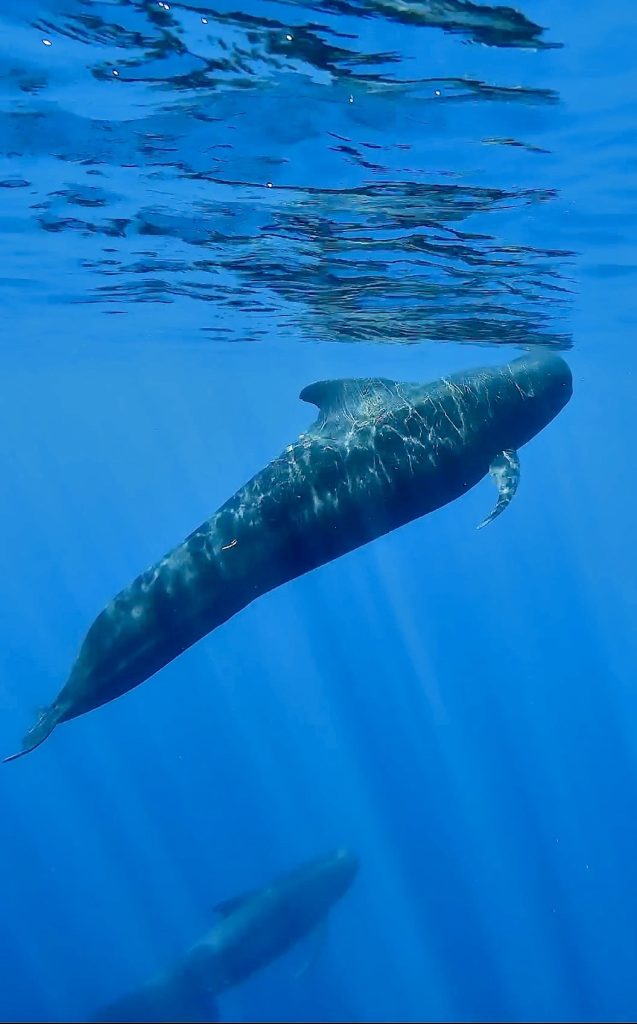
Recently we had some beautiful cetaceans visiting our bay: short-finned pilot whales (Globicephala macrorhynchus). They were sighted for a few days in our area. Even though they are not super rare to see here, they are not common, so it was fascinating seeing them, but also the fact that we saw maybe hundreds of them, as long as we could see, fins broke the water’s surface.
Pilot whales are odontocetes, toothed whales, and are part of the marine dolphin family. They can look like other dolphins but are much bigger, reaching 12 to 20ft in length (4 to 7m), and have a very characteristic rounded and bulbous melon. This round head gives them their scientific name, from the Latin globus, which means globe, and is an outstanding characteristic that will help you differentiate them. They are black to dark gray/brown with a white anchor-shaped patch in their chest, that looks like a bow tie and have a wide and hooked dorsal fin.
They live in warm waters worldwide and are known for being highly playful and social. They live in matrilineal groups, consisting of a matriarch with her immediate family. They remain in their family group for life. The males leave their groups to mate with members from other families during temporary aggregations of different groups. Females go through menopause, meaning they have important roles once they stop reproducing, like helping care for the calves and as keepers and transmitters of their ecological wisdom.
Short-finned pilot whales feed mainly on squid; they can dive more than 3200ft (1000m) hunting for it. Before we found the pod, we saw pieces of squid floating on the surface, so looks like they had a fest that day!
Pilot whales are often found in aggregations with other species, we saw them hanging out with bottlenose dolphins. They have a complex repertoire of sounds that they use to locate food and for communication. They have strong social bonds, which could explain the frequency of mass strandings in this species.
We enjoyed the presence of several families that formed a huge pod that surrounded us, sometimes coming close to our boat. Mothers traveling with their babies next to them and big males, all together swimming in our waters, a great start to a new season!